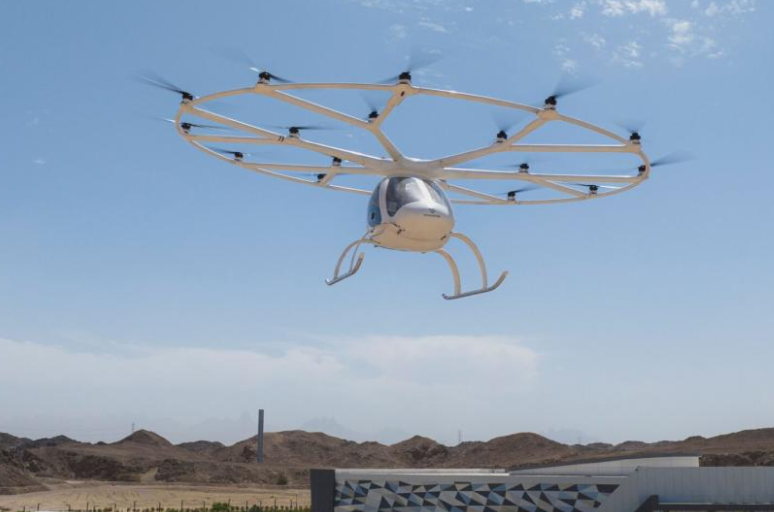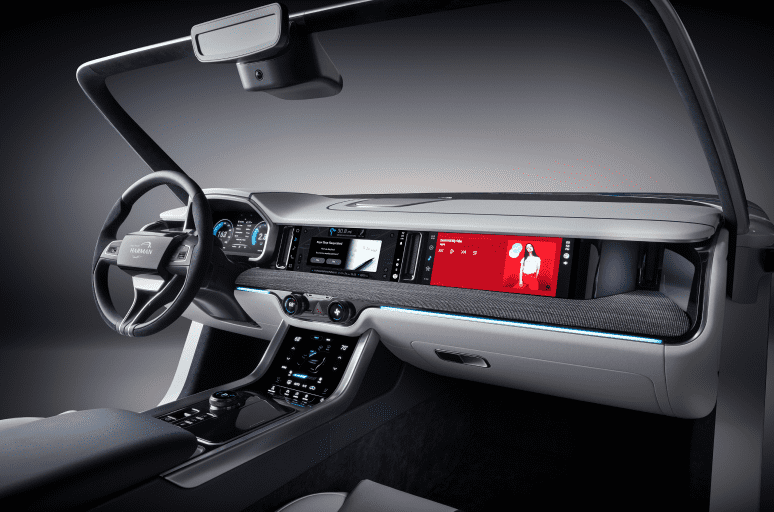For the longest, I’ve considered time to be among the utmost important resources in our lives, the reason being it’s finite and in no way retrievable. In the business context, this means there’s money to be made whenever you can help save it.
Well, you know what eats up a lot of time? Having to go from one place to another, which especially in major cities can quickly turn into a hassle. A micromobility app installed on one’s phone is perfectly suited to alleviate the pain of being forced to allocate the precious resource of time to a journey by providing access to transportation means designed to trim down the unwelcomed expense. Today we’ll be taking a dive into the micromobility market and showing you how to develop an app that addresses an important urban issue.
The pursuit of efficiency and cost-effectiveness reigns supreme in many aspects of life. When it comes to travel, particularly in bustling urban environments, there is a persistent need for innovative solutions that optimize resources. The niche has been recently filled by micromobility apps which serve as gateways to a vast ecosystem of transportation options.
What is micromobility
Micromobility is a term that refers to the use of small means of transportation for short-distance trips in urban areas. They are usually available for rent through an app that connects users with the nearest vehicle and charges them by the minute or by the distance.
Micromobility apps have been growing in popularity in recent years, which passes both the eye test and post-pandemic predictions by McKinsey, as they offer a number of benefits for users and cities. The former can save time, money, and hassle by avoiding traffic jams, parking fees, and public transit delays while reducing the carbon footprint. The latter benefit from less traffic congestion, pollution, and noise, creating a more livable and mobile environment. A win-win in the urban jungle.
Most popular micromobility vehicles
With how many means of moving around there currently are in cities, let’s take a moment to define what falls into the micromobility category as small, wheeled, light vehicles with no internal combustion engine and a max speed of 15 mph (24 km/h), operated personally over a rather short distance.
Some of the most popular types include:
- bicycles – both personal and those making up the shared fleets, as well as electric bicycles (e-bikes)
- electric scooters
- electric skateboards
- pedelecs – electric pedal assisted bicycles which I see some of the food delivery companies utilize in their operations
- self-balancing electric unicycles – seem to be gaining in popularity both for personal and business use
- segways – they’ve been around for a minute, but will we see them utilized in the shared mobility industry?
FYI, there’s a number of other means of getting around which aren’t really relevant to this post (you don’t rent them via an app) that are also classified as micromobility vehicles such as golf carts or mobility scooters.
How big is the micromobility market?
By now, it's evident that micromobility is not just a passing trend but a thriving market with immense potential. With urban populations on the rise and increasing demand for efficient, eco-friendly transportation solutions, the micromobility market has witnessed exponential growth in recent years.
Sources differ in their estimations of its size but where they all agree is that further growth lies ahead.
According to Verified Market Research, the global micromobility market size was valued at $40.81 billion in 2022 and is projected to reach $194.21 billion by 2030, growing at a CAGR (compound annual growth rate) of 16.63% from 2023 to 2030.
McKinsey & Company say that micromobility was expected to be a $300 billion to $500 billion market only across the EU, US, and China by 2030 before the COVID-19 pandemic hit. Their report also suggested that the industry could recover faster than other modes of transport and even gain market share in the post-pandemic world.
Allied Market Research shows that the global micromobility market was valued at $44.12 billion in 2020 and is projected to reach $214.57 billion by 2030, registering a CAGR of 17.4% from 2021 to 2030.
Top micromobility companies
So, who’s leading the charge? What organizations are making the most impact on urban transportation, reshaping the way people are getting around the cities? Depending on where you’re located you should probably see at least some familiar names on this list of the world’s biggest micromobility companies.
Lime
Lime, which operates e-scooters, e-bikes, and e-mopeds in more than 100 cities across Europe and North America. Lime is considered the world’s largest micromobility company after acquiring Jump, Uber’s micromobility arm, in 2020. The company also raised $523 million in funding in 2021 securing means for further growth.
Spin
Spin, which is a subsidiary of Ford and offers e-scooters in over 50 cities and campuses in the US and Europe. Spin was acquired by Ford for $100 million in 2018 and has since expanded its fleet and services. That said, the company recently announced that it will exit some major markets, such as Los Angeles and New York, to focus on profitability.
Tier
Tier Mobility, which is a German-based company that provides e-scooters and e-bikes in over 160 cities across Europe and the Middle East. Tier Mobility became the largest micromobility company in Europe after acquiring Nextbike, a bike-sharing firm, in 2021. Tier Mobility also partnered with Voi Technology, another European e-scooter company, to launch a joint venture called Zumo that offers e-mopeds.
Niu Technology
Niu Technology, which is a Chinese company that produces and sells smart electric scooters. Niu Technology has sold over 2 million scooters in 40+ countries since its founding in 2014.
Bolt
Bolt, an Estonian company that offers ride-hailing, car-sharing, food delivery, and micromobility services in over 40 countries. Bolt’s micromobility segment includes e-scooters, e-bikes, and e-mopeds that are available in more than 200 cities. The company is planning to go public in 2025.
Micromobility trends for 2023 and 2024
The future of micromobility has a lot in store. There’s still room for expansion in terms of the types of vehicles being offered, the way they’re designed, how they’re offered, and how deeply they’re integrated with existing infrastructure. Here are the micromobility trends we’ll see more of in the coming years.
The expansion of the microcar segment
Microcars offer a number of advantages such as efficient charging, easy parking, and lower price points when compared to conventional cars. TMicrocars market could reach $90 billion annually across China, Europe, and North America by 2030.
The growth of the e-moped/bike hybrid segment
The vehicle which combines the features of a bike and a moped is often legally considered a bike. These make up at least 15% of the global moped-sharing fleet and are popular in countries like India, Indonesia, Turkey, and the USA.
The increase of tenders for shared e-scooter schemes in Europe
A growing trend among cities which use this method to regulate and award contracts to operators. Finland and Germany will follow this path in 2023, after countries like the UK and Spain.
The adoption of subscription models for micromobility
A subscription offers users unlimited access to vehicles for a fixed monthly fee. These models can increase customer loyalty, retention, and revenue for operators, as well as reduce operational costs and risks.
The integration of micromobility with public transit
An attempt to create a seamless and multimodal mobility experience for users which can involve physical infrastructure, such as dedicated lanes, parking spaces, and charging stations, as well as digital platforms, such as apps, maps, and payment systems. Deeper integration has already been happening as exemplified by Lime’s partnership with Google Maps, Voi’s collaboration with Citymapper, and Tier Mobility’s cooperation with BVG.
The innovation in vehicle design and technology
Micromobility operators will aim to improve the performance, safety, and sustainability of their vehicles. Introducing novelty can involve new features, such as swappable batteries, smart locks, cameras, sensors, and lights, as well as new materials, such as biodegradable plastics, recycled metals, and organic fabrics. Innovation has already been introduced in Bolt’s e-bike with a built-in solar panel, Niu Technology’s smart scooter with cloud connectivity, and Unagi’s e-scooter with a magnesium alloy frame.
How to build a micromobility app
Shared micromobility is a booming industry that offers convenient, affordable, and eco-friendly transportation options to urban dwellers. If you want to join this growing trend and create your own micromobility app, follow the steps below to get a better understanding of where to start and what to do.
Know your audience and the niche
Before you move on to any of the more technical details, you need to have a clear vision of who you are serving and why. Market research will be necessary to understand the needs, preferences, and behaviors of your future customers. Then, you also need to do competitor analyses, as well as the regulations in the area you eventually wish to operate in. Use the lessons learned to define your value proposition and unique selling point.
Pick your vehicle type and hardware
Next, you need to decide what kind of vehicles you want to offer to your users. Is it going to be scooters, bikes, or perhaps something more exotic like segways or unicycles? Following up, you'll have to select the hardware components that will enable your vehicles to communicate with the app, such as GPS trackers, locks, batteries, and sensors. Considering how micromobility vehicles are exposed to heavy use and outside conditions, make sure the hardware is reliable and secure.
Design and develop your app’s MVP
Here comes the fun part: getting down to MVP development. Designing a user-friendly and engaging interface is a must. Users need to be able to find, unlock, ride, and pay for the vehicle easily and intuitively. You also need to develop the backend functionality that supports user authentication, payment processing, vehicle management, analytics, and so on. Use various APIs and SDKs to integrate with third-party services and features that will enhance your app's capabilities.
Test and launch your app
Before you release your app to the world, you need to test it thoroughly for functionality, usability, security, and performance. Once you're done with it, get the minimum viable product out and see how it fares. Collect feedback, introduce any changes necessary and deploy the app to the app stores.
Manage and optimize your fleet
Once your app is live, you need to keep an eye on your vehicles using fleet management software employing location-based features that track their position, status, battery level, usage, and other parameters. You'll also have to perform fleet management activities regularly to ensure the vehicles are safe and clean. Finally, collect and analyze the data flowing in from the app and fleet to optimize your pricing, customer service, and other parts of your operations.
To learn how to best deal with some of the more technical aspects of building a micromobility app have a look at these resources:
Stepping into the micromobility market with RST Software
The world of compact and environmentally-friendly transportation solutions is a fascinating one. From the bustling streets of city centers to the quiet corners of suburban neighborhoods, micromobility has emerged as a powerful force, shaping the way we navigate our surroundings.
As a startup founder, you're standing at the precipice of an incredible opportunity to bring your passion and vision for solving urban mobility problems to life. Together we can create an amazing micromobility app that will delight your users, make a positive impact on the environment, and leave a lasting impact on the way people move.
We understand that transforming ideas into reality requires crucial expertise and technical knowledge. Our team of experienced developers and business professionals is here to guide you every step of the way, from conceptualization to development and beyond. If you'd like to utilize our know-how, simply drop us an email at hi@rst.software and our team will take it from there.







